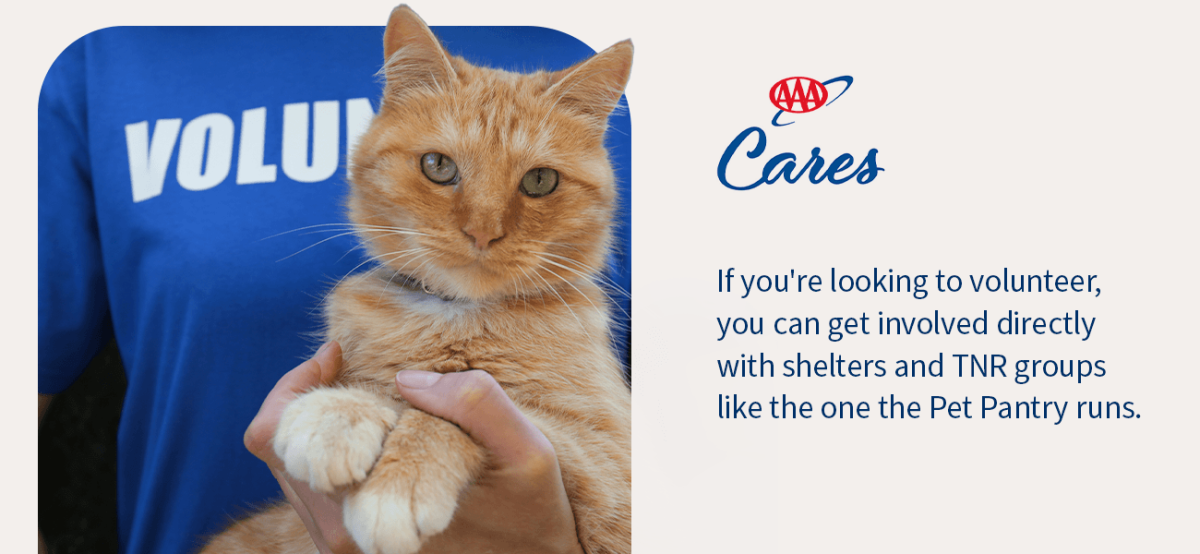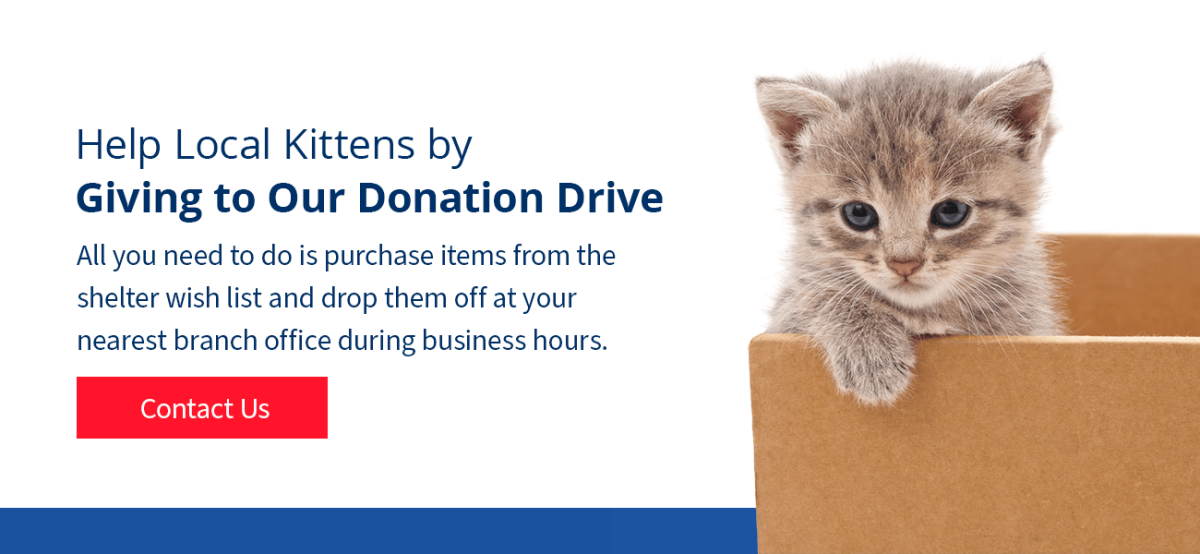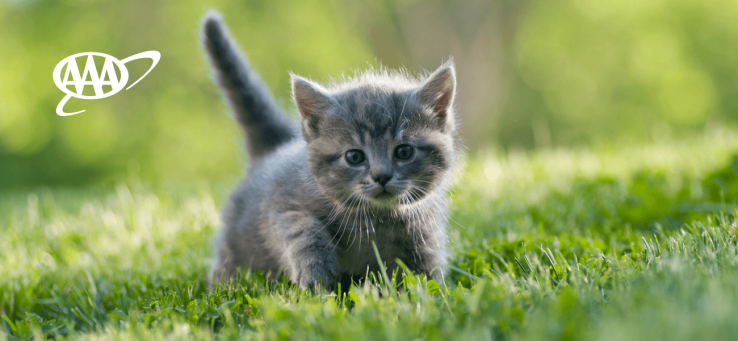Did you know 80% of cats born in the United States are born outdoors? Many of these kittens are born during kitten season.
There's plenty you can do to help shelters and animal welfare groups minimize cat overpopulation in Lancaster. We talked to Brenda Fijalkowski, VMD, the Medical Director of the Pet Pantry of Lancaster County, to get some insight into what kitten season looks like for volunteers and how you can get involved.
What Is Kitten Season and When Does It Happen?
Kitten season is the time of year when unaltered cats are most likely to have kittens. Feral cat populations grow rapidly during this time because one female cat can have as many as five litters in a season and can begin getting pregnant as young as four or five months old.
Kitten season typically lasts from March to October, and feral cat populations can grow rapidly if left alone.
“In 2023, the Pet Pantry of Lancaster County took in 289 felines between April and October,” says Fijalkowski. One colony can grow to more than 2,100 cats and kittens in four years if all can reproduce — especially since cats will move in from other areas if there's enough food and shelter.
Many animal welfare organizations like the Pet Pantry run Trap, Neuter, Release (TNR) programs to catch and sterilize feral cats. Due to resource limitations, however, the Pet Pantry can only perform TNR services one day per week.
“It is our hope to be able to expand TNR surgery days to four days each week, with the help of volunteer veterinarians, technicians and assistants,” Fijalkowski says.
While TNR programs can help keep feral cat populations in check by preventing reproduction, the approach is controversial because some believe that the population will not decrease unless every cat in the area is caught. Its advocates say change is possible, but only with the help of the whole community.
As Fijalkowski says, “Unless massive cooperative efforts are made by the community, local governments, veterinarians and animal welfare organizations to trap and alter as many members of the colony at once, the kittens will keep coming.”
Why Is Cat Overpopulation in Lancaster County Such an Issue?
Throughout Lancaster County, kitten season can bring issues for pet rescues, local wildlife and much more. Some of the most significant effects of cat overpopulation in Lancaster County include:
Increased Ecological Threat
Rapidly growing cat colonies pose a threat to local animals. Domestic outdoor cats are an invasive species that have directly caused the extinction of various animals, including 63 bird, mammal and reptile species worldwide.
Overwhelmed Shelters and Rescues
The rapid growth of cat colonies during kitten season often exceeds what local animal rescues can handle.
Spread of Disease
Many of the kittens rescued during kitten season suffer from respiratory infections, parasites, wounds and skin diseases that require costly intensive care.
What Can We Do to Help With Cat Overpopulation?
Many local shelters and organizations, including AAA Central PA, run donation drives during kitten season to raise funds and collect essential kitten supplies like non-clumping cat litter and kitten milk replacer. You can also make a monetary donation directly to your nearest rescue organization if you prefer.

Fijalkowski says that “monetary donations are so helpful to cover the cost of their care.”
If you're looking to volunteer, you can get involved directly with shelters and TNR groups like the one the Pet Pantry runs. Offering your time can help reduce the impact of cat overpopulation and lower the burden on local shelters.
“We will need the help of communities willing to assist in mass trapping efforts to stop the flow of kittens and stabilize colony numbers,” Fijalkowski says.
Other local organizations in need of assistance include the SPCA of Lancaster County, Cocoa Kitties and the Humane Society of Lebanon County.
Fostering is another option that's crucial for younger kittens who are too weak to survive in crowded shelter environments. Kittens' eyes and ears do not fully open until they are several weeks old, and they're especially vulnerable to infections in these sensitive organs until they get older.
If you plan to foster, remember that baby kittens require more intensive care than older kittens and adult cats. Kittens typically need hands-on care every few hours until they reach four weeks old, and sick kittens need even more aid. Fijalkowski notes that some kittens remain with the Pet Pantry for months before they are healthy enough for adoption.
Finally, you can provide a loving forever home to a new kitten by adopting and insuring their care. For more information on fostering or adopting in your area, contact nearby shelters and ask about their requirements.
Help Local Kittens by Giving to Our Donation Drive
We run an annual donation drive each May to gather top-needed items for local animal shelters like the Pet Pantry of Lancaster County. All you need to do is purchase items from the shelter wish list and drop them off at your nearest branch office during business hours.
Questions? Contact us at AAACares@aaacp.com for more information.


